Determining ideal body composition for optimum performance
Read time: 6 minutes, 30 seconds.
Body composition refers to the relative proportions of different tissues in the body, such as muscle, bone, fat, and water. It provides a good understanding of an individual’s physical makeup and health status.
Body weight alone does not provide information about the relative amounts of lean body mass (such as muscle and bone) versus fat mass. Two individuals with the same body weight can have very different body compositions. One person may have a higher proportion of muscle and lower body fat, while the other may have more body fat and less muscle. They also may vary greatly in height, body shape, and where they store their body fat.
Also Read: Fueling Your Performance: Why Carbohydrates Matter in Sports Nutrition
Body composition can be assessed using various methods. These include skinfold calipers, bioelectrical impedance analysis, dual-energy X-ray absorptiometry (DEXA), and underwater weighing. These methods can provide information about an individual’s body fat percentage and lean body mass. This can be useful for tracking changes in body composition over time. One thing to note is that these methods vary in their accuracy. For example, skinfold calipers are far less accurate than a DEXA scan. But, if you measure consistently using the method, you can at least determine how your body composition is changing over time.
Healthy body composition ranges for men and women can vary. This is due to differences in hormone levels, muscle mass, and body fat distribution. In general, men tend to have a higher proportion of lean body mass (muscle and bone) compared to women. Women tend to have a higher proportion of body fat because they have higher levels of estrogen. Estrogen is a hormone that plays a role in regulating fat storage and distribution in the body. It also promotes the accumulation of fat on the hips, thighs, and breasts, which is important for reproductive function.
It’s also important to note that body composition ranges should not be used as the only measure of health. Cardiovascular fitness, strength, flexibility, and lifestyle habits are also important indicators.
In general, adult athletes with a lower body fat percentage and a higher lean body mass tend to have better performance in most sports. This is because excess body fat can add unnecessary weight that may slow an athlete down or reduce their agility.
Also Read: Determining Ideal Body Composition for Optimum Performance
However, athletes in certain sports may benefit from having a higher body fat percentage. For example, endurance athletes like long-distance runners may benefit from having a slightly higher body fat percentage. Though it’s not typical to see an endurance runner with high body fat, it can provide extra energy reserves for long-distance events.
The ideal body composition for a specific sport or position within a sport depends on several factors. These include height, muscle mass, body type, body shape, and bone structure.
There are three main body types, also known as somatotypes, that describe the general shape and composition of an individual’s body. These body types were first identified by William Sheldon in the 1940s and are still commonly used today. They are:
Ectomorph: Ectomorphs tend to be thin, with long limbs and a lean build. They have a fast metabolism and may have difficulty gaining weight or building muscle. Ectomorphs are often characterized as “naturally skinny” and may excel in endurance sports such as distance running.
Further Reading: 8 Secrets to Improving Endurance in any Athletic Activity
Mesomorph: Mesomorphs have a more muscular build with broad shoulders and a narrow waist. They tend to gain and lose weight easily and respond well to strength training. Mesomorphs are often characterized as “naturally athletic” and may excel in sports such as bodybuilding, sprinting, and gymnastics.
Endomorph: Endomorphs tend to have a softer, rounder build with a higher body fat percentage. They have a slower metabolism and may have difficulty losing weight. Endomorphs are often characterized as “naturally curvy” and may excel in sports that require power and strength, such as weightlifting and football.
And then there’s the factor of body shape which is also determined by genetics. Examples for men include an inverted triangle for a V-shape, a rectangle or square, a round or apple, and a triangle or pear. Female body shapes include rectangle or square, triangle or pear, hourglass, and round or apple.
Body composition and body shape or body type are similar but different. For example, two individuals with the same body shape may have different body compositions, with one having a higher proportion of muscle and lower body fat than the other. Similarly, two individuals with different body shapes may have similar body compositions, with similar amounts of muscle and body fat despite differences in bone structure or muscle distribution.
In terms of athletic performance, body composition is an important factor to consider as it can affect an individual’s strength, power, speed, and endurance. An individual’s body shape or type can also play a role in determining their athletic strengths and weaknesses. Certain body shapes may be more advantageous for specific sports or activities. Ultimately, both body composition and body shape or type should be considered when evaluating an individual’s athletic potential and designing a training program to optimize their performance.
Ultimately, the optimal body composition for athletic performance will vary depending on the individual athlete and the specific demands of their sport.
Also Read: Training and Nutrition for Different Types of Athletes
Here are a few things you can do to determine whether your current body composition is hindering your athletic performance. If so, you may want to consider adjusting it by working toward building more muscle mass, losing body fat, or both.
1. Assess your current body composition.
You can use a method such as skinfold calipers, bioelectrical impedance analysis, dual-energy X-ray absorptiometry (DXA), or underwater weighing to determine your current body composition, including your body fat percentage and lean body mass.
2. Compare your body composition to healthy ranges.
The healthy body composition numbers for adult men and women can vary depending on several factors, including age, fitness level, and overall health status. However, as a general guideline, the American Council on Exercise (ACE) provides the following healthy body fat percentage ranges for men and women:
3. Compare your body composition to elite athletes in your sport.
Elite athletes in different sports have varying body compositions depending on the physical demands of their sport. For example, a professional basketball player may have a higher body fat percentage and lean body mass compared to a professional marathon runner. Comparing your current body composition with the average ranges for elite athletes in your sport can provide insight into where you stand in relation to the top performers in your field. For example, a male basketball player might aim for a body fat percentage between 6-10%, while a female gymnast may aim for a body fat percentage between 10-16%.
Also Read: Embracing Healthy Fats for Optimal Athletic Performance
Elite athletes can serve as a reference point but remember that everyone’s body composition is unique and individual goals may vary. Plus, achieving an elite athlete’s body composition may not necessarily lead to improved athletic performance for you. That’s because there are so many other factors such as skill, technique, and mental toughness that determine success in sports.
The exact numbers for these ranges may vary but here’s a good estimate for you to work from. I created this table from body fat percentages for elite athletes in various sports. These results were published by the American Council on Exercise.
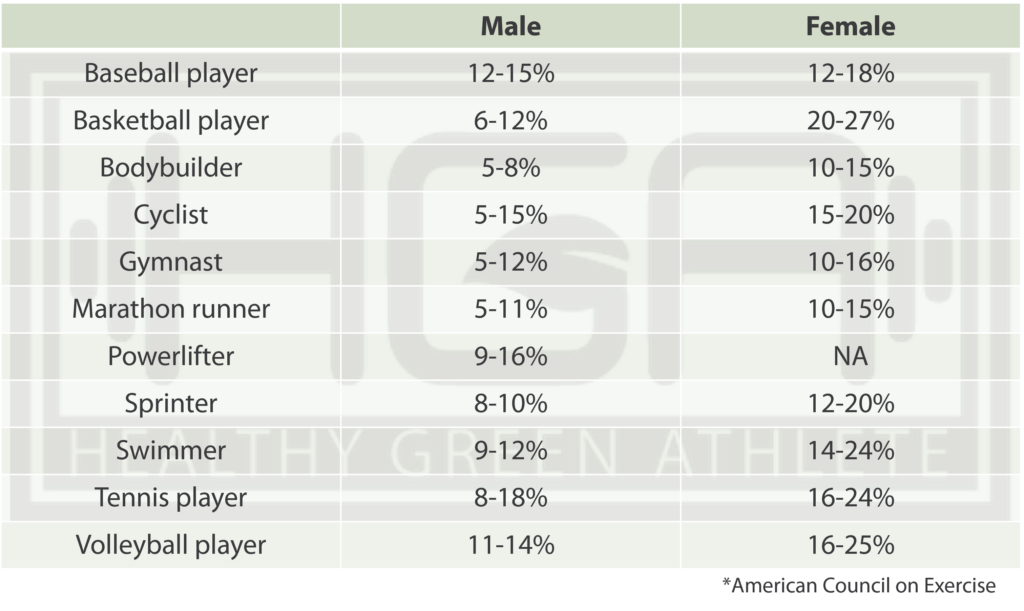
4. Evaluate your own performance.
Consider your athletic performance goals and assess whether your current body composition is helping or hindering your ability to achieve those goals. For example, if you are a distance runner, a slightly higher body fat percentage may help provide you with extra energy stores for longer runs, while a sprinter may benefit from having a lower body fat percentage for improved speed and power.
5. Seek guidance.
If you are unsure about your body composition or how it may be affecting your athletic performance, consider seeking guidance from a qualified healthcare professional or sports nutritionist. They can help you develop a personalized plan for achieving and maintaining a healthy body composition that supports your athletic goals.
Also Read: 5 Tips to Measure Progress to Achieve Your Goals
This is something that I often work with my adult athlete clients. Many of them find that as they get older, it becomes more difficult to change body composition. But it’s not impossible! We begin by determining their starting point and then develop a plan for changing body composition for the benefit of performance. To do this, most clients focus on building muscle through nutrition, strength training, and lifestyle changes.
You can further check out my services here.
In summary...
Body composition is an important aspect of overall health and athletic performance. While body weight can be a misleading measure of health, body composition takes into account the proportion of lean body mass (muscle and bone) and body fat, which can provide a more accurate picture of overall health status. Healthy body composition ranges can vary for men and women due to differences in hormone levels, muscle mass, and body fat distribution. Assessing your current body composition and comparing it to healthy ranges for your age, sex, and sport can help you determine whether your current body composition is serving your athletic performance goals.
However, it’s important to remember that achieving a certain body composition is not the only factor that leads to improved athletic performance, as other factors such as skill, technique, and mental toughness are also important. By working with a healthcare professional or qualified fitness professional, you can develop a personalized plan for achieving and maintaining a healthy body composition that supports your athletic goals while promoting overall health and wellness.
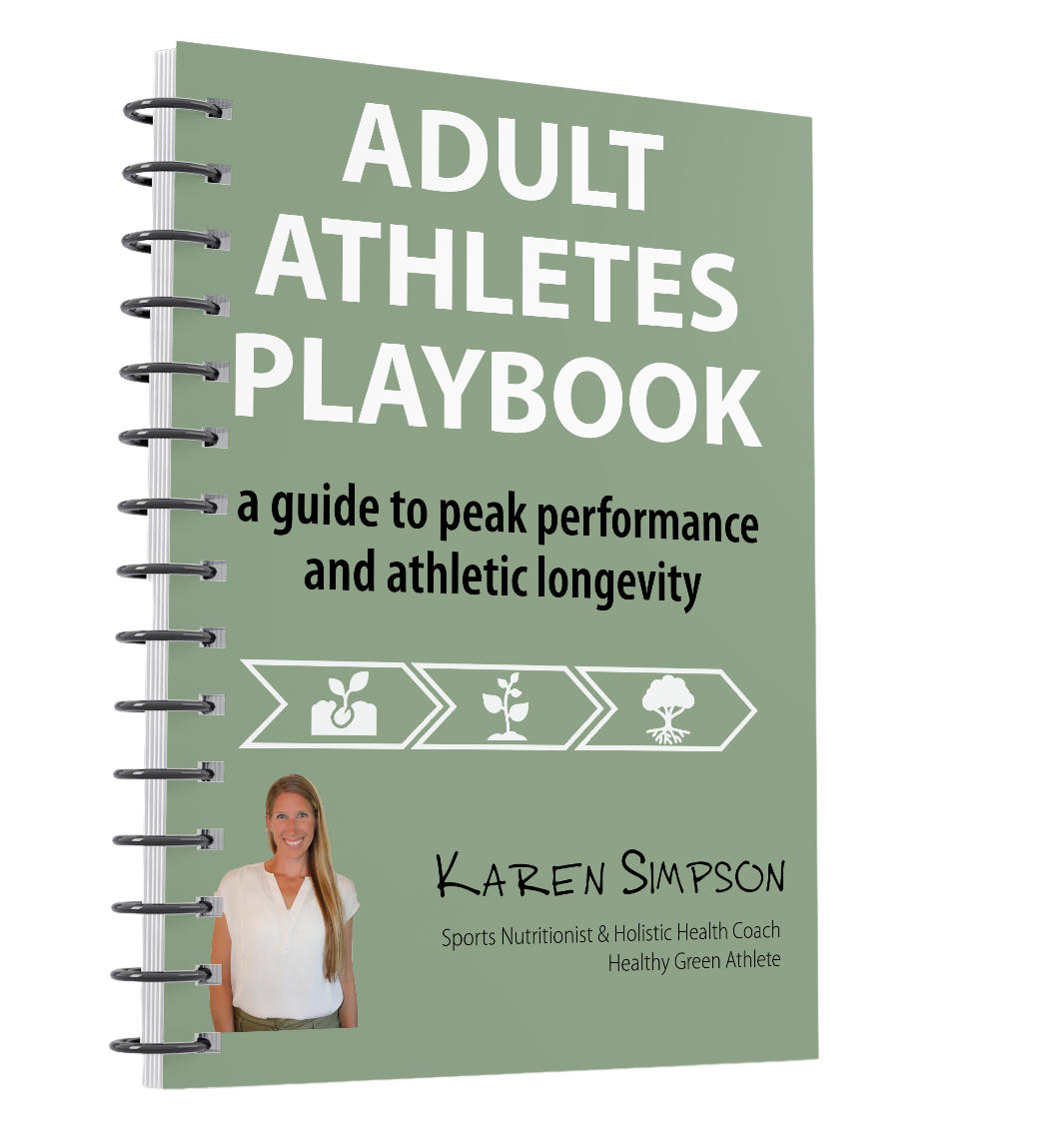
Adult Athletes Playbook
A Guide to Peak Performance and Athletic Longevity
This playbook will help you develop and implement a personalized game plan for improving athletic performance.

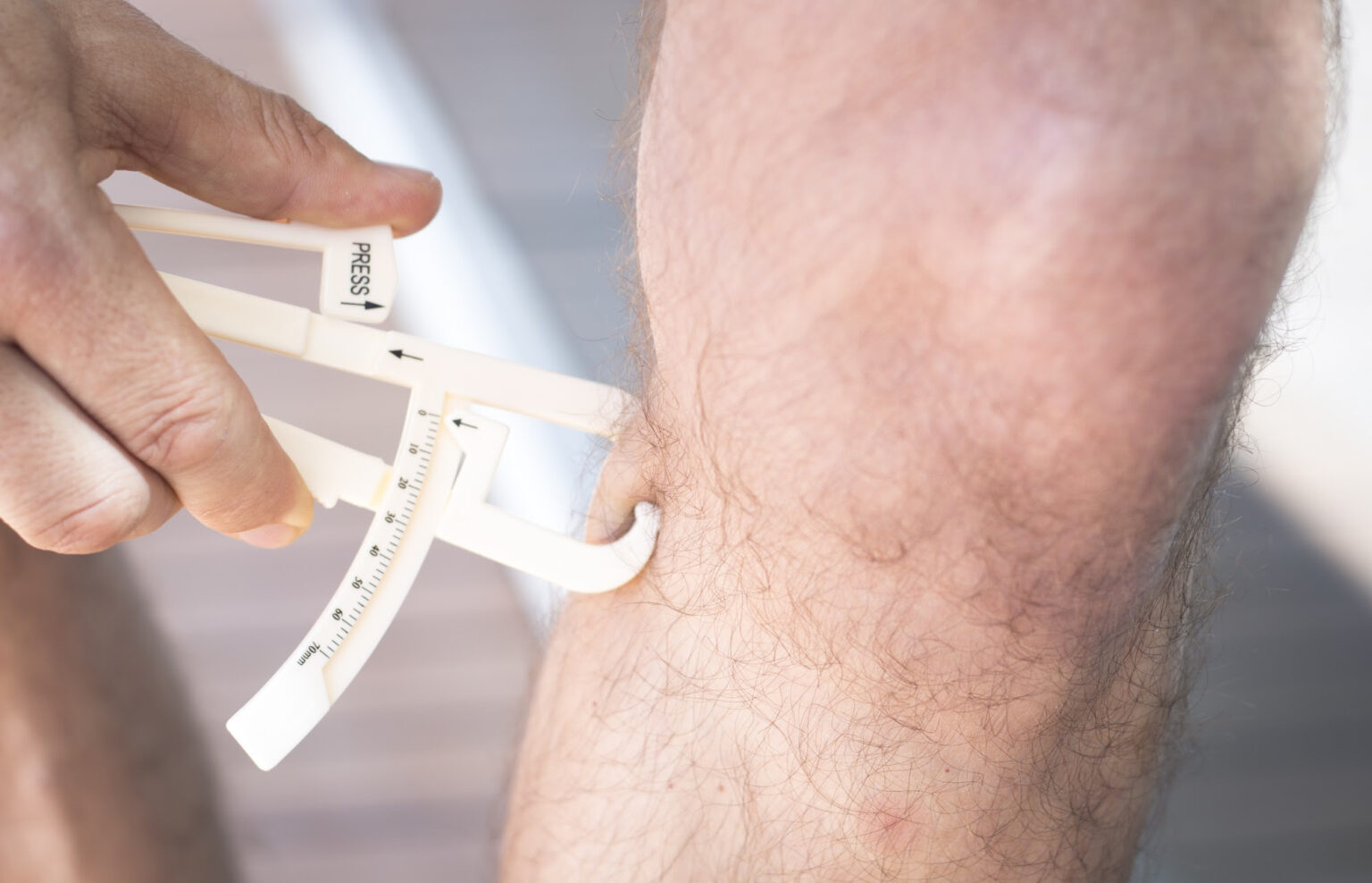






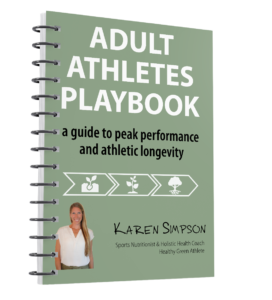

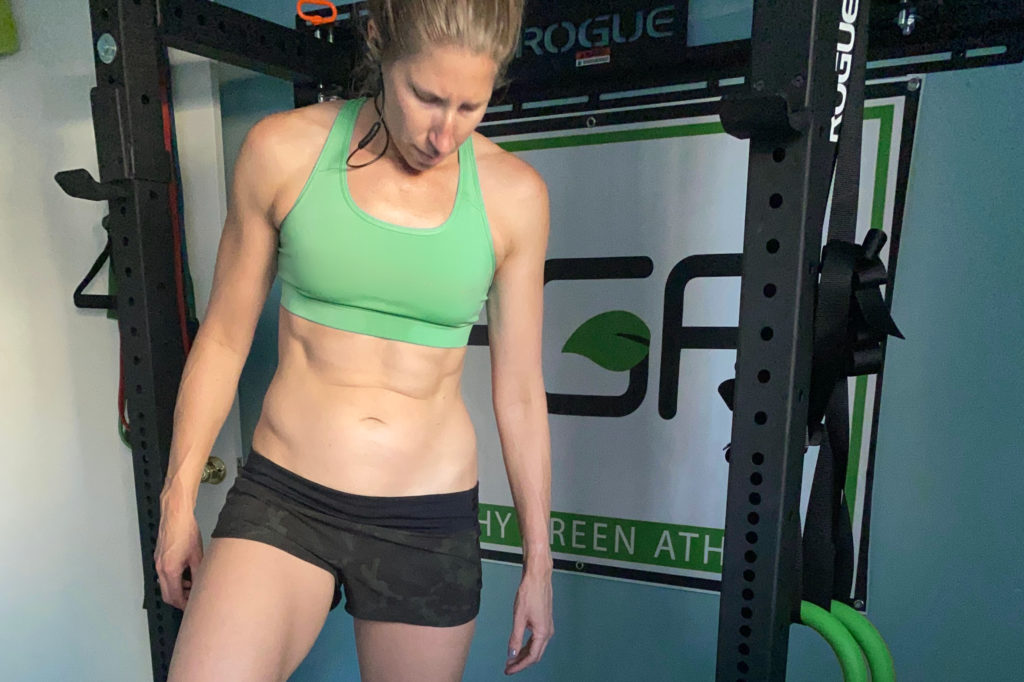

One Comment
Pingback: